Panasonic has long offered a respectable range of superzoom cameras within its Lumix portfolio, but the Lumix FZ1000 was still a notable addition when it arrived three years ago. The reason? While it adhered to the same formula as previous FZ models, by employing a 1.0-inch-type sensor it promised far better image quality than we'd expect from such a camera.
This, combined with its DSLR-style body, meant it became a natural rival to the Sony Cyber-shot RX10, a camera that also married a long zoom with the same size of sensor. Sony has since updated its camera twice, most recently with the Sony RX10 III, while Canon has also muscled in on the action with its 1.0-inch-sensor-toting PowerShot G3 X. Now, Panasonic is fighting back with the FZ2500 (it's called the FZ2000 outside the US).
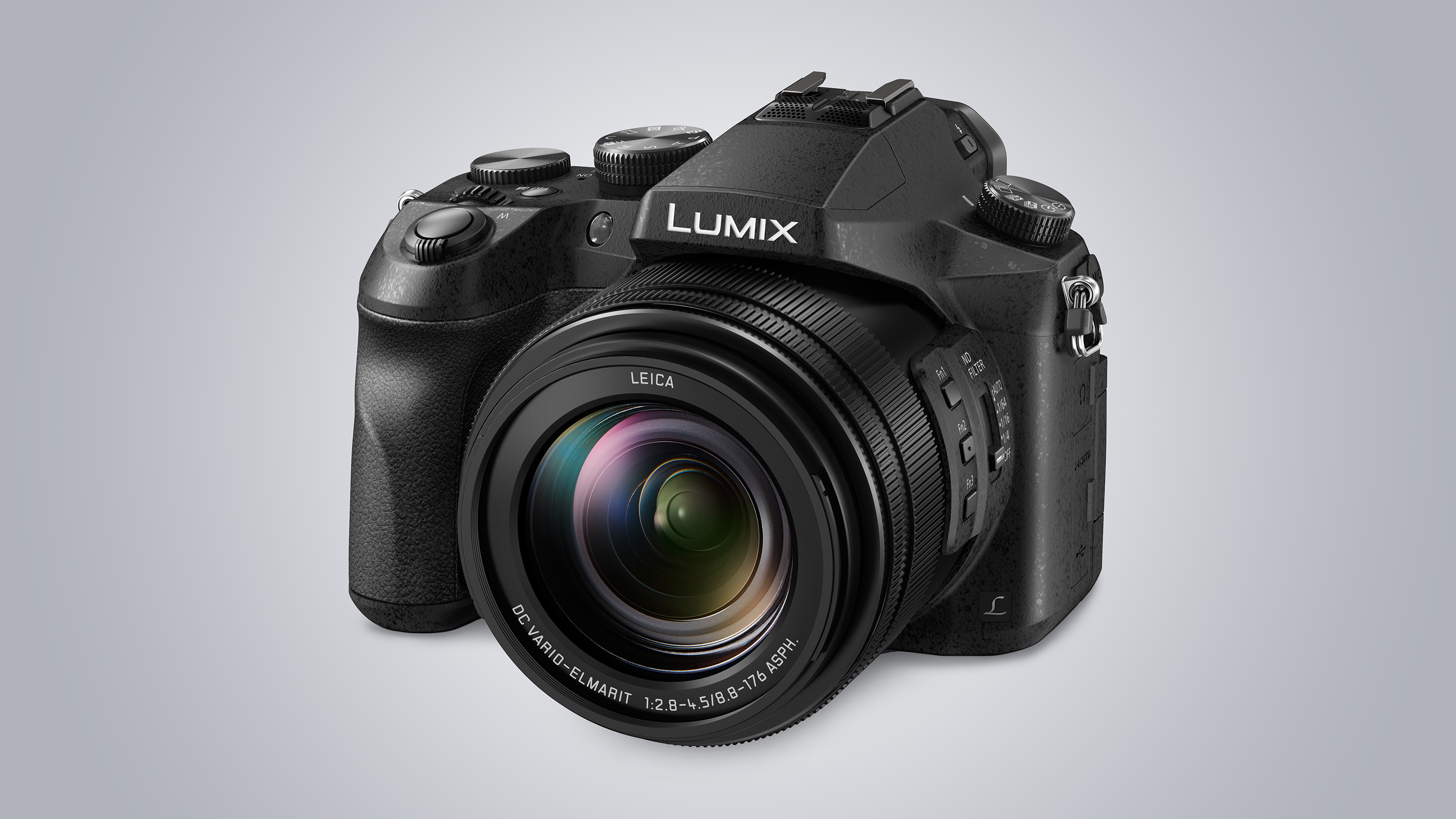
The new model arrives with a longer lens than its predecessor’s, together with a handful of updated features, and the FZ1000’s video specs sweetened with a few extra additions. Indeed, the level of control offered by the camera over video recording is exhaustive, and way beyond what we’re used to seeing at this level. This video functionality is centred around the camera’s ability to capture 4K footage, with some of the changes made to the new optic helping to record more professional footage – more on this later.
While understandably pricier than the FZ1000 it supersedes, the FZ2500 / FZ2000 is currently cheaper than its closest rival, the Sony RX10 III. True, the two aren't completely equal in every area, with optical capabilities, battery life and weight being the main points of difference. Nevertheless, the FZ2500 / FZ2000 will no doubt be an attractive alternative for anyone interested in the RX10 III, but perhaps less keen on its asking price.
Features
- 1.0-inch CMOS sensor, 20.1MP
- 24-480mm f/2.8-4.5mm zoom lens
- Built-in ND filters
Every camera we've seen to date with a 1.0-inch-type sensor has offered a 20MP pixel count, and the FZ2500 / FZ2000 follows suit. Panasonic isn't claiming that this is in any way different from the sensor inside the FZ1000, so it’s reasonable to assume that this has been carried over.
The sensor features a back-illuminated construction for more efficient light capture, and a sensitivity range that runs from ISO125 to ISO12,800, although it’s possible to expand this to settings equivalent to ISO80 and ISO25,600 should you need to.
This sensor works in harness with a Venus processing engine, and together these allow for 4K video capture, now in both 4K UHD (3840 x 2160) and 4K DCI (4096 x 2160) flavours. You can record at 30p and 24p frame rates, at a rate of 100Mbps, and if you switch to Full HD and you can record at up to 60p at 200Mbps.
As we've come to expect from Panasonic, the 4K video functionality is complemented by a wealth of supporting options, and on the FZ2500 / FZ2000 these stretch from fun and novelty settings to those you tend to only see in pro-grade equipment.
You can, for example, use the Creative Controls when recording, instantly adding effects such as Toy Effect and Rough Monochrome to footage. You can also use the useful Live Cropping feature to pan or zoom across the frame without manually having to do so, with the camera outputting the results in Full HD quality.
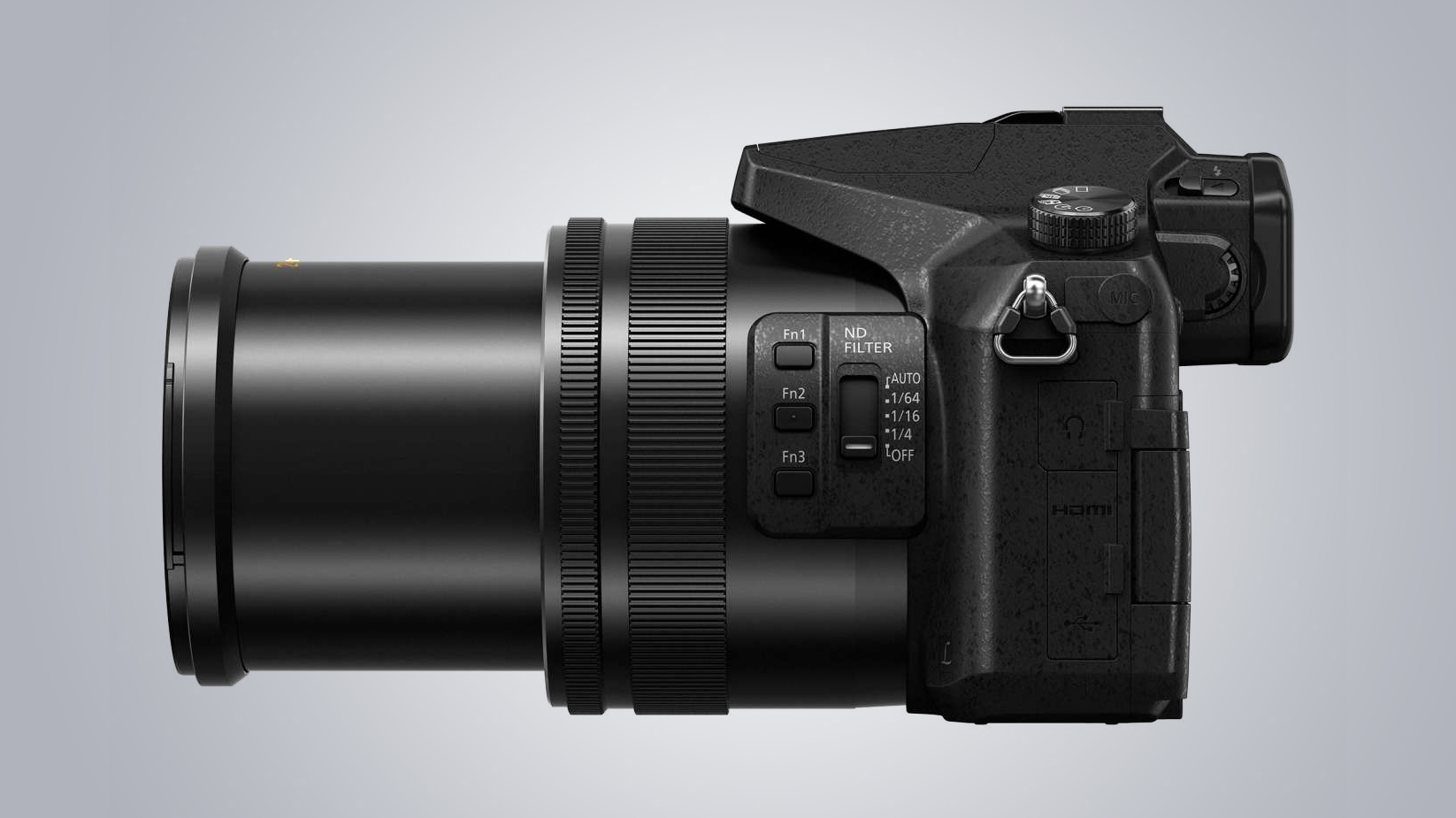
There’s also focus peaking and zebra patterning for focus and exposure respectively, while more advanced options include adjustment to the Master Pedestal Level, appending Time Code and colour bars that conform to the SMPTE, EBU, ARIB standards. You can also output 10bit footage with 4:2:2 chroma subsampling through the HDMI port to an external recorder, and opt for a V-LogL option to give you a better starting point for post-production, although this latter option is a chargeable extra.
Video recording is also improved by changes made to the optic. There’s a new guide-pole mechanism that’s said to minimise shifts in the position of the image when zooming, and this works with an internal zoom structure to help keep things even more stable as the lens moves. Panasonic also says that a new galvanator-type actuator helps to smoothly adjust the nine-bladed diaphragm for more discreet changes in brightness, while the further incorporation of two ND filters allows for three levels of filtration – useful for video recording.

The lens itself spans a 20x optical zoom range, covering focal lengths equivalent to 24-480mm in 35mm terms – the far end of the zoom range is shown above. This is broader than the 25-400mm range offered by the FZ1000. It has a variable maximum aperture of f/2.8-4.5 and is equipped with a Hybrid O.I.S. system that promises correction over five axes, although this doesn't quite offer maximum correction when recording in either 4K quality or when using high-speed shooting for slow-motion footage.
Once again Panasonic has opted for the same partnership of an electronic viewfinder – or 'Live View Finder' in Panasonic parlance – and an LCD screen that can be pulled away from the body, although changes have been made from those on the FZ1000.
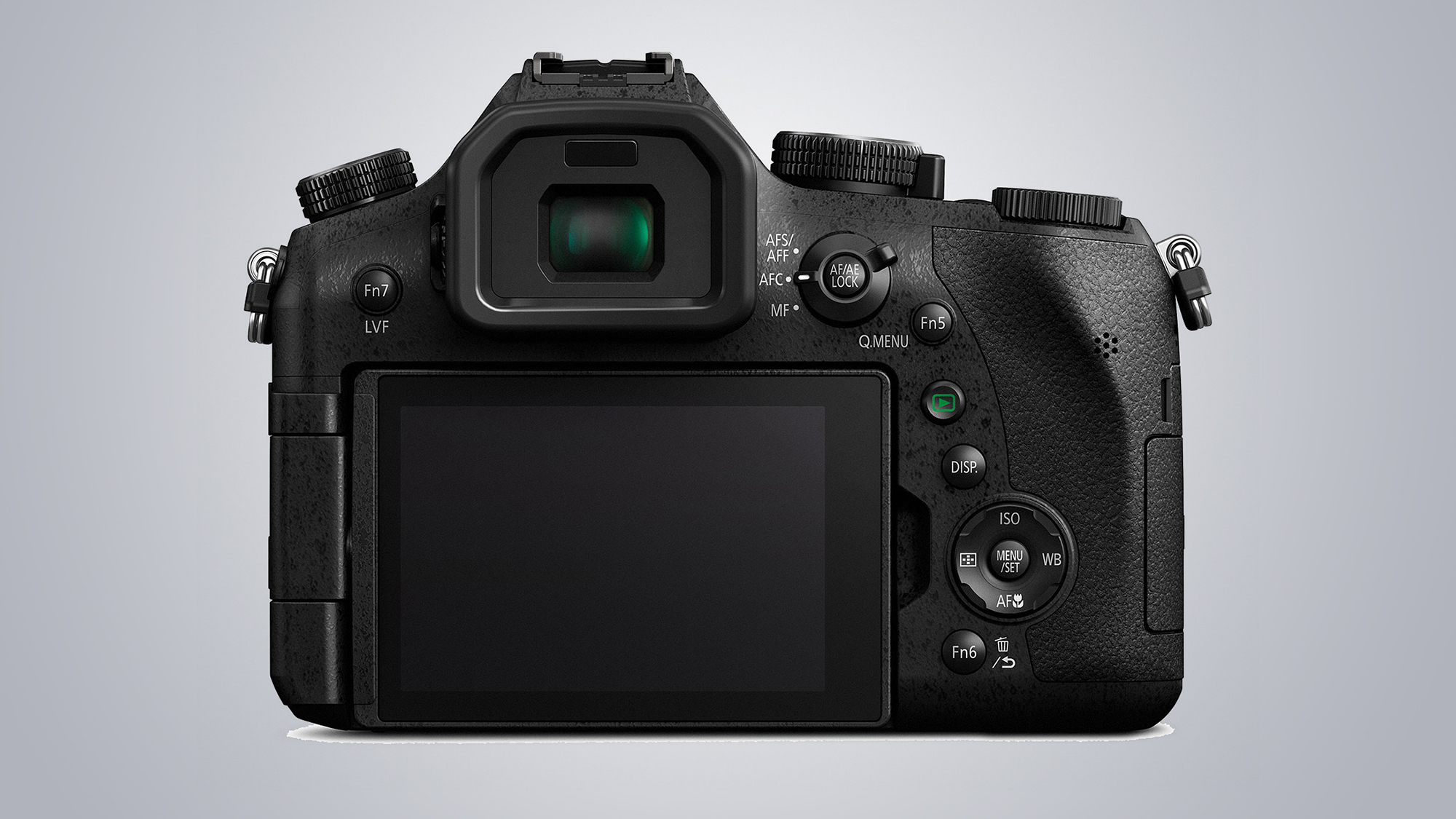
While the LCD screen is still 3.0 inches, for example, Panasonic has increased its resolution slightly from 921K dots to 1.04 million dots, and also made it touch-sensitive. It’s also increased the magnification of the EVF from 0.7x to 0.74x, although its 2.36 million-dot resolution remains the same.
Internally, everything is recorded to an SD, SDHC or SDXC card, with support provided for the UHS-I Class 3 standard, although the HDMI port is there should you want to output footage to an external recorder. Wi-Fi is also on board, although unlike on the FZ1000 there’s no NFC technology alongside. In another move that will please videographers, the mic socket has been joined by a headphone port, which allows for audio to be monitored during recording.
Build and handling
- DSLR-style design
- Built-in flash and hotshoe
- 966g
Anyone who's used to the FZ1000 may notice that the FZ2500 / FZ2000 is somewhat heavier, and with only a handful of physical differences between the cameras it seems this is down to the new optic. Historically, one issue with these sorts of cameras is that the camera becomes unbalanced as the lens zooms from one extreme to the other, although the internal zoom and focus systems prevent this from being an issue.
The camera sits nicely in the hands thanks to the deep rubber grip, and the abundance of physical controls allow for key settings to be accessed very quickly. User-friendliness is further aided by several customisable Fn buttons, including three on the lens barrel and five virtual buttons in the menu. Some may see this as overkill – and the virtual buttons are admittedly small and cramped – but it’s difficult to dispute that you can really make this camera work how you want it to.
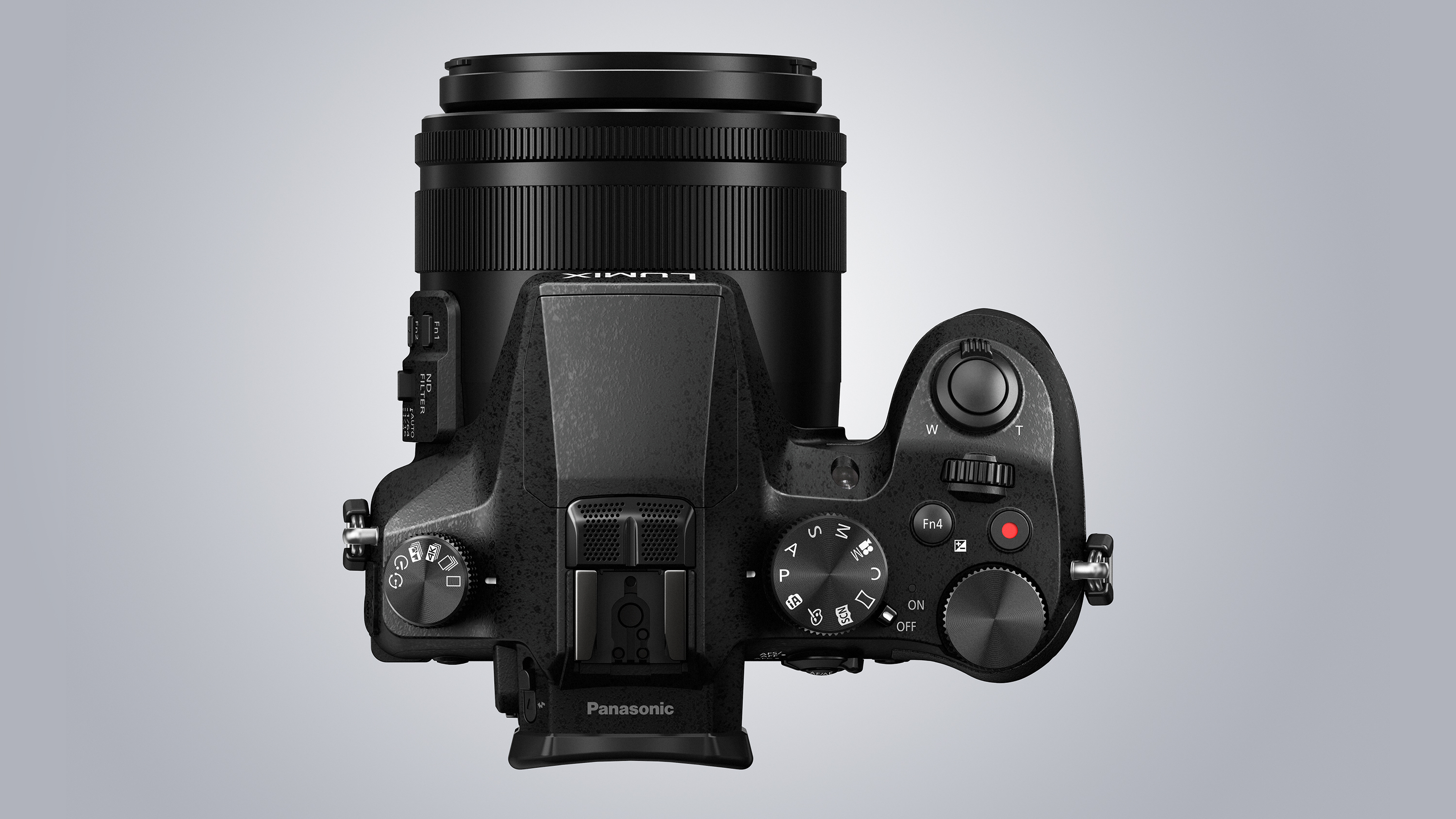
The FZ1000 had one ring around its lens barrel, and on the FZ2500 / FZ2000 this is joined by a second ring just in front of it. The default setup has the broader of the two rings operating the zoom and the narrower one adjusting focus, although the collar around the power switch is arguably the easier way to zoom the lens, so you may wish to use this for day-to-day shooting.
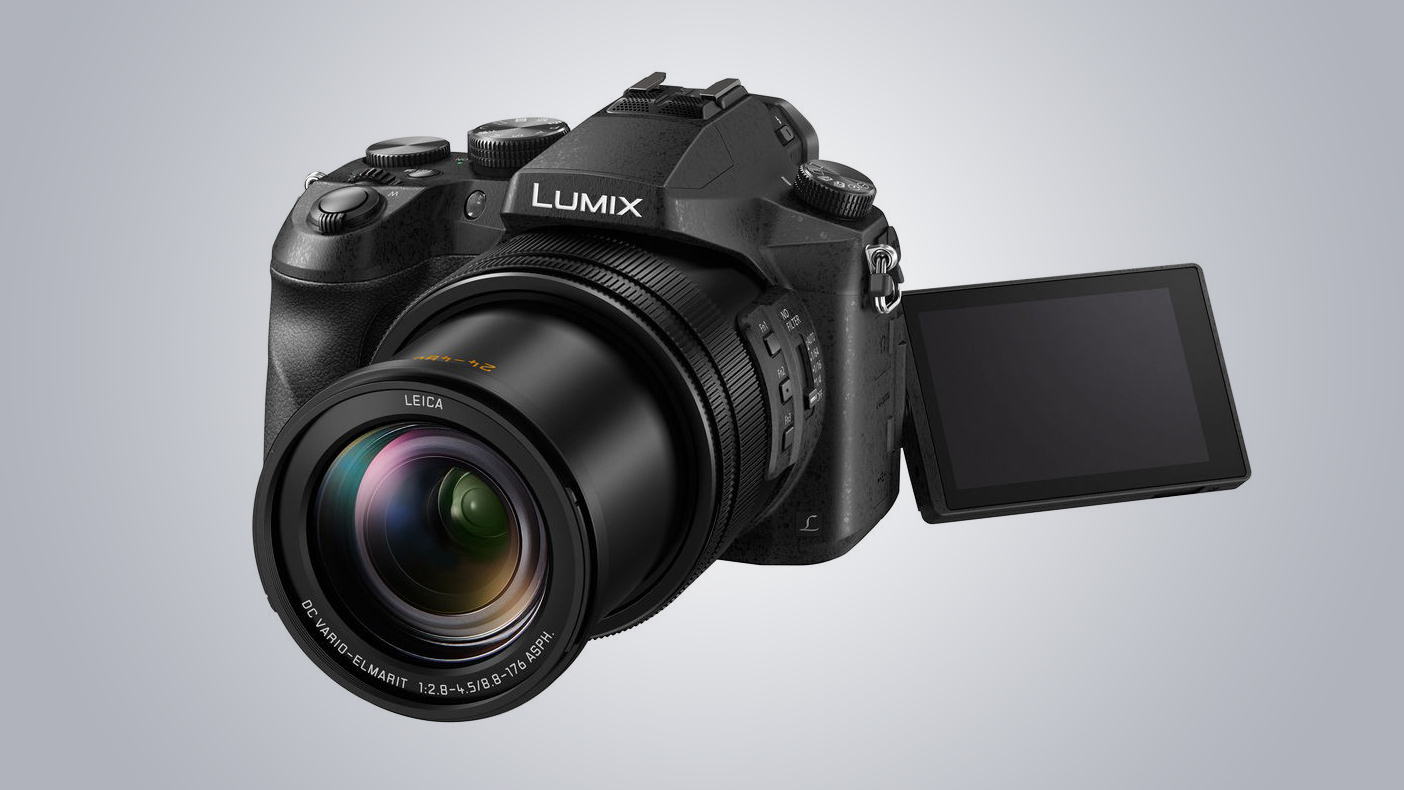
These two rings, alongside the dials on the top plate, are designed from metal and add a touch of solidity to the camera, while the generous use of rubber around the grip is appreciated, although Panasonic doesn't state that the camera is weather-resistant to any degree. A few drops of rain here and there probably won’t do much harm, but it’s a shame when you consider the four-figure outlay – and the fact that weather-proofing is offered on rival cameras.
Autofocus
- Light Speed AF system
- Depth From Defocus (DFD) technology
- Post Focus, Focus Bracketing and Focus Stacking
Panasonic has put a great deal of work into its autofocusing technology, and it shows. In good light the system locks onto subjects without delay, and it performs almost as well even in less ideal conditions. As is generally the case, there’s slightly more hesitation at the telephoto end of the lens than the wide-angle, but even here performance is still very good.
Those using the FZ2500 / FZ2000 for action will be pleased to learn that the camera not only tracks subjects around the scene with great dexterity, but manages to keep them focused when set to the AF-C option too. The system did much better than we expected here, only occasionally drifting away from the subject when challenged with detail that was particularly bright, or similar in appearance to the subject. It did lose particularly erratic subjects on occasion, although these would outfox many more advanced DSLRs.

Panasonic also deserves credit for the extent to which it supports the camera’s focusing system with a range of options, from pinpoint focus for accuracy to its effective face recognition system. Even when using manual focus there’s a surprisingly broad range of options, with 10 different peaking colours across two peaking levels, together with the option to move the magnified portion of the frame to whichever area is most relevant using the touchscreen.
If we do have a complaint, it’s that it’s not as easy to adjust the camera’s focusing point as it is on cameras with a joystick-type control. You can use the menu pad’s directional buttons, and even the touchscreen, when using the viewfinder, but the facility to move the point more conveniently with a single physical control would make this far easier.
Performance
- 12fps burst shooting (50fps with electronic shutter)
- 5-Axis Hybrid O.I.S system
- 2.36 million-dot Live View Finder
The FZ2500 / FZ2000 is capable of shooting at 12fps continuously, although this drops to 7fps should you want the autofocus system to keep a lock on moving subjects. When using the electronic shutter, however, it’s possible to boost this to 50fps at the camera’s maximum resolution.
Battery life is rated at around 350 images when using the LCD and 270 images when using the viewfinder, although you can typically extend it by adjusting your power management settings. Helpfully, you can also charge the camera through its USB 2.0 port, which is great if you happen to be by your computer or if you’ve misplaced your charger. This is also handy for travel and holidays – ideal applications for the FZ2500 / FZ2000 – as you can travel without a bulky charger.
The camera’s five-axis image stabilisation system is clearly effective, and makes a significant difference to keep things steady at the telephoto end. Furthermore, the dual axis levelling function is perhaps one of the better systems of its kind, clear enough to show that the camera is level without posing an obstruction to details in the scene.
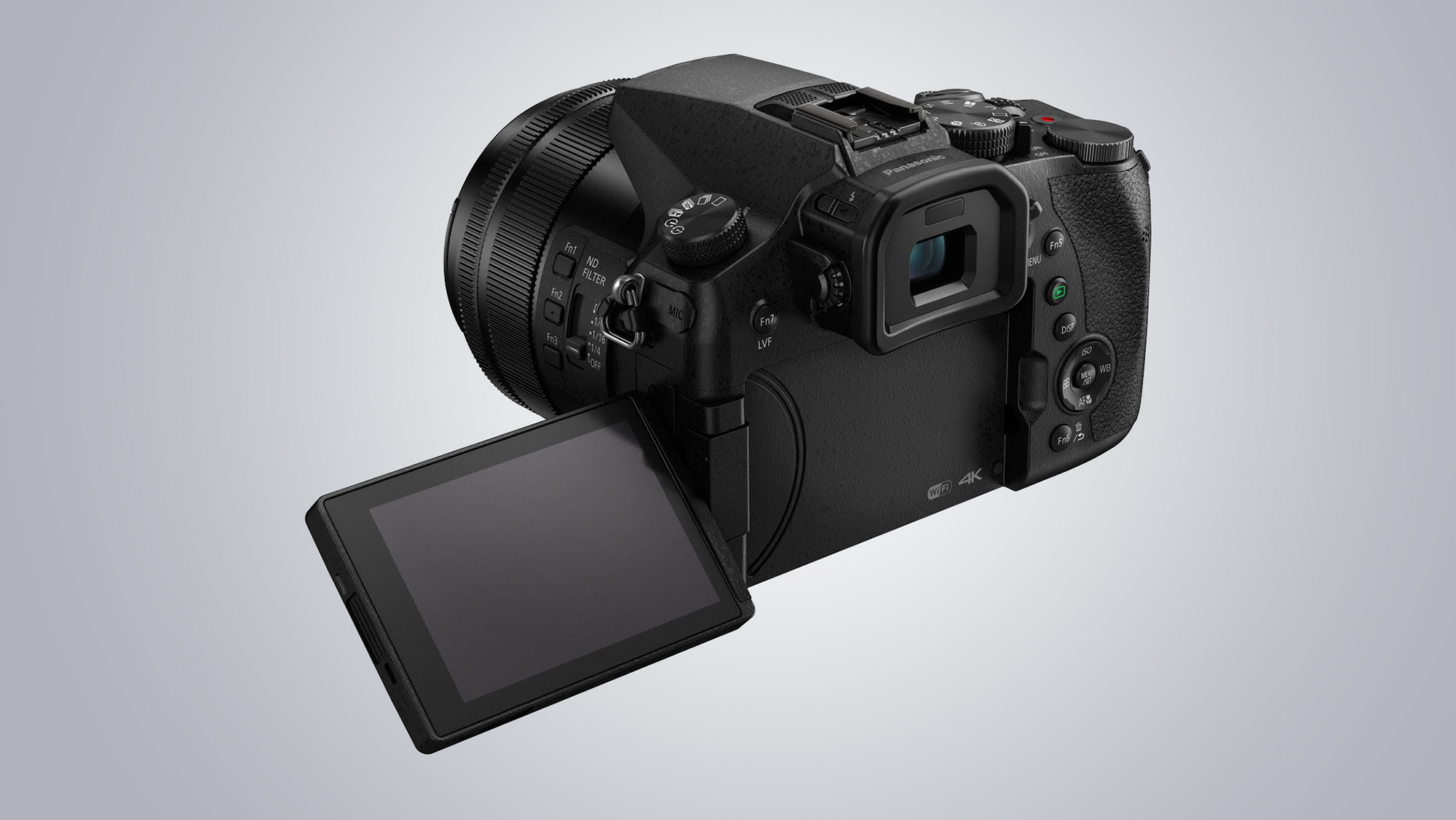
Another change Panasonic has made from the FZ1000 is an increase to the viewfinder’s magnification, from 0.70x to 0.74x (in 35mm terms). This places it at the same level as many compact system cameras and some DSLRs, and its performance is very good in both good lighting and more demanding conditions. Details are clear, while noise and artefacts are both low, and the feed is nice and fluid.
The new touchscreen on the FZ2500 / FZ2000 is a massive help too, particularly when you’re using the LCD screen for composition, and even more so when it’s pulled away from the camera and used down low or up high.
The screen is highly sensitive, which makes it easy to focus on subjects by touch, and its visibility in harsher light is better than expected – looking closely you can see that it's quite close to the outer panel, which helps to combat reflections. Its excellent sensitivity, however, is also something of an issue, in that it’s very easy to inadvertently move the focusing point, or select an option by simply brushing against it.
The sensitivity and protrusion of the viewfinder’s eye sensor also mean it’s easy to deactivate the LCD screen when you’re using it, particularly when shooting at hip or ground level. You can reduce the sensor's sensitivity a touch through the menu, though, and this helps a little.
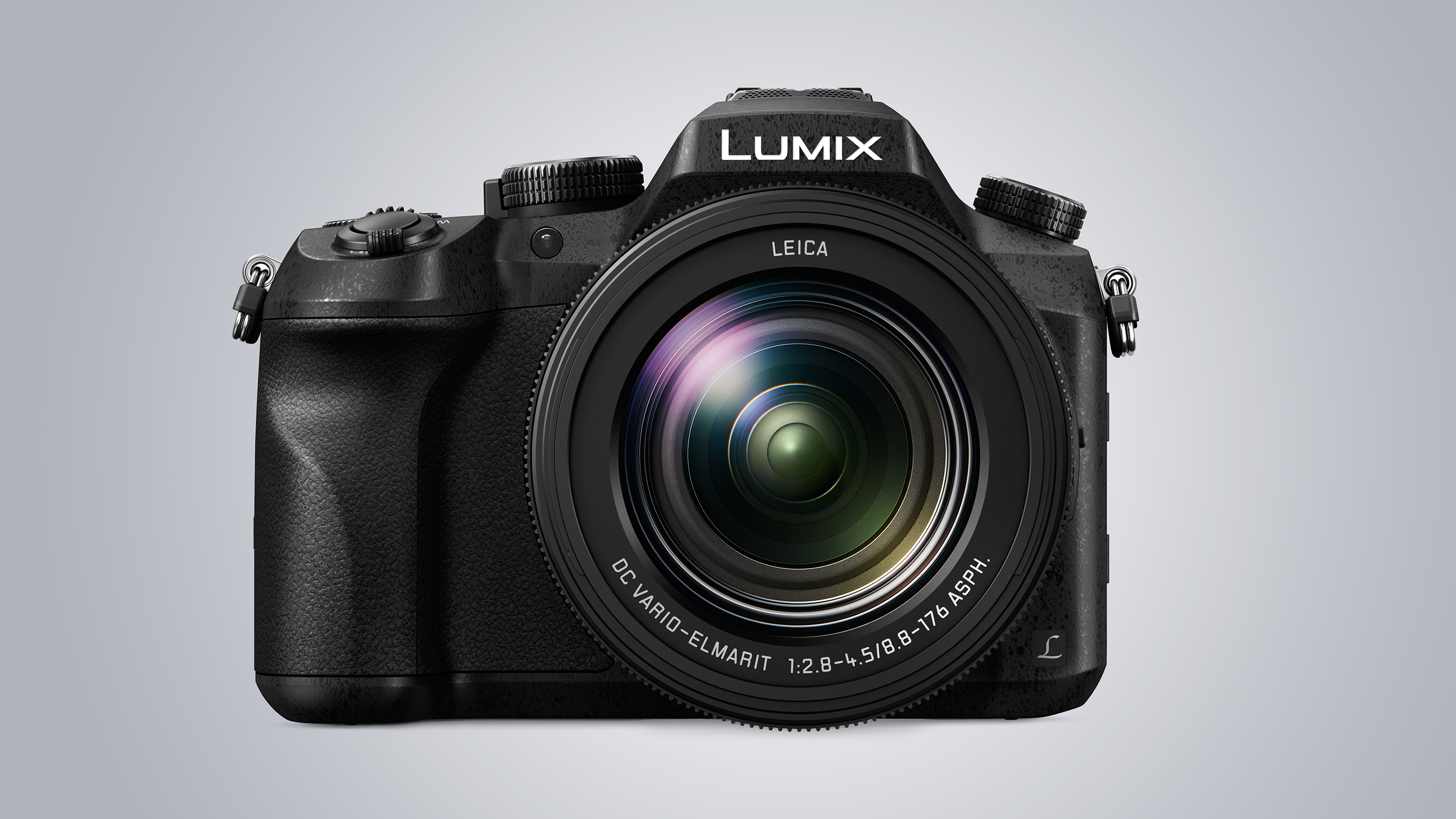
One of the main impressions you develop through use is just how responsive the FZ2500 / FZ2000 is in a range of situations. For example, even though you have to wait a brief moment for the lens to fully extend upon powering it up, the camera is ready for action with very little delay.
Browsing through the menus reveals no lagging, and with the right card in place shot-to-shot times are very good too. The touchscreen is slightly less responsive to pinching than anticipated, although it responds well to double-tapping.
Image quality
- In-camera raw processing
- +/-5EV (in 1/3EV steps)
- 4K DCI and 4K UHD video recording
The fact that the FZ2500 / FZ2000 appears to use the same sensor as the FZ1000 means we have a rough idea of what to expect in terms of image quality, although the new lens and any tweaks to processing will alter things slightly. In any case, the news is generally good.
The quality of video footage is very good, with a high level of detail and no particular artefacts evident. While the clarity isn't quite up there with the kinds of results we see from Panasonic’s Micro Four Thirds cameras, the FZ2500 / FZ2000 still does a very good job, and manages to suppress most noise in everyday footage.
The image stabilisation system helps to keep things calm at longer focal lengths, and rolling shutter is well controlled too. With the further advantage of reasonably clear audio, the camera can certainly produce great results here, with just a little manual intervention.

The FZ2500 / FZ2000's metering system doesn't appear to have any real issues, only occasionally leaning slightly towards underexposure, and otherwise performing well. Similarly, the Auto White Balance system manages to reproduce colours accurately under both natural and artificial lighting, and we was impressed by how faithful images looked at the default settings; you may want to intervene when capturing images in overcast conditions, though, as they can appear a little lacklustre otherwise.

Noise isn't problematic at the lower end of the sensitivity scale, and images generally retain their integrity well until around ISO1600 (as with the image above), where colour noise becomes more aggressive in shadow areas. Images are still usable at this setting, and indeed up to ISO6400, although how useable will depend on the subject, and on how you plan to output the images.
Detail is generally very good, and if you capture in raw you of course have greater scope for adjustment, although the breadth of control over in-camera JPEGs means it’s quite possible that you’ll be happy to rely on these for everyday shooting. Being critical, images do appear to lack the bite of those from the Sony Cyber-shot RX10 III, although that camera is admittedly more expensive.
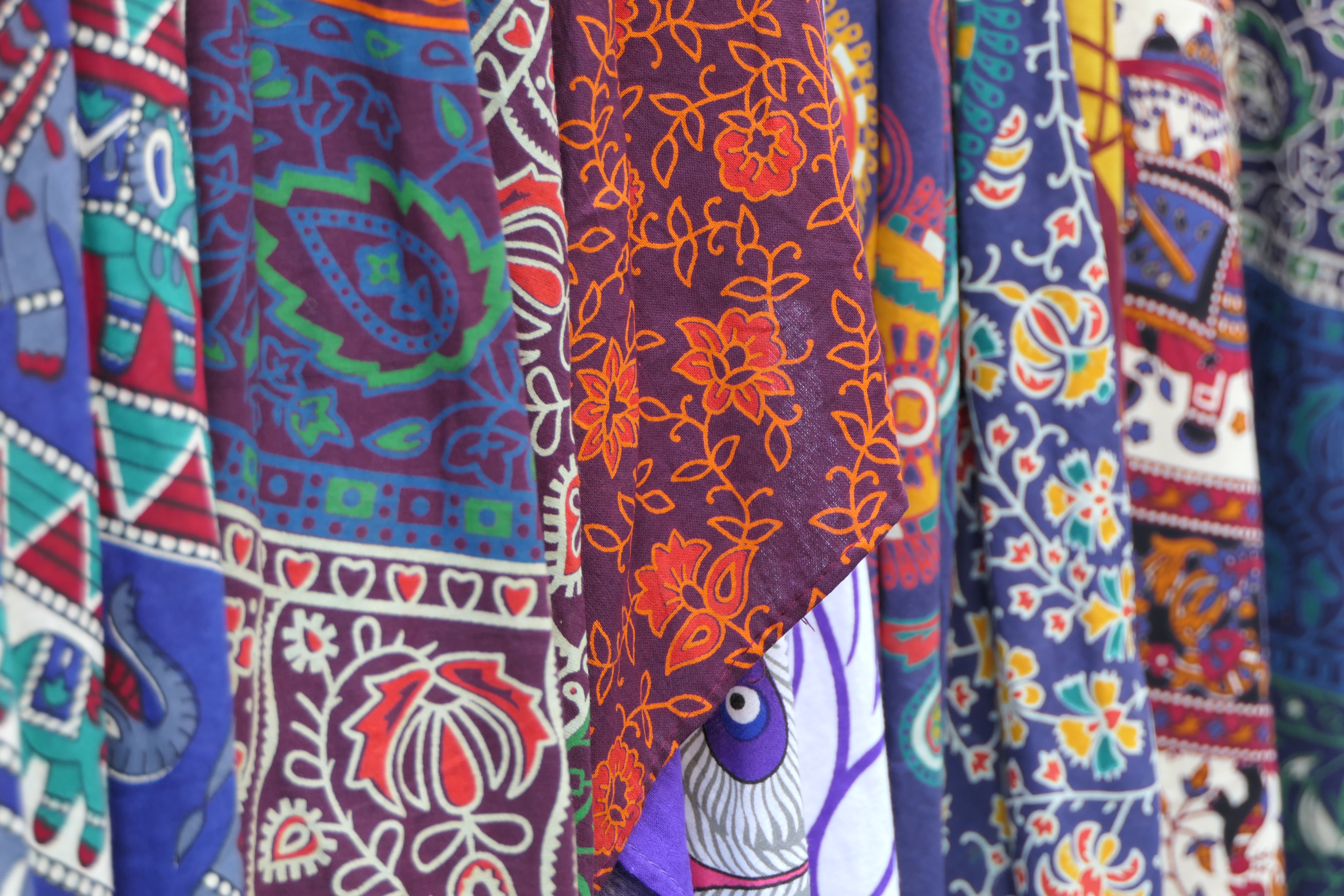
It’s worth experimenting with the FZ2500 / FZ2000's noise reduction system if you’re in the habit of only capturing JPEGs; while some may find the default level a little heavy-handed, Panasonic does provide fine control over this if you want to make it less aggressive. If you're only using high-ISO images at smaller print or display sizes you may be perfectly happy with the JPEG options, but if you’re in any doubt, simply shoot raw images alongside and manually process out any noise.

It’s pleasing to find that optical aberrations, which are a particular concern for any camera with such a mammoth zoom lens, are largely absent from images. This is no doubt thanks to a combination of the camera's lens and processing prowess, with distortion corrected very effectively at the wide angle, and only traces visible further up the focal range. Vignetting is also minimal, as are chromatic aberrations, despite the latter being a little more visible at times.
Verdict
The Panasonic FZ2500 / FZ2000 is an impressive camera, with lofty ambitions that are thankfully matched by strong performance. If you're using it for video recording in particular it’s likely that you’ll be pleased with the results, if somewhat overwhelmed by the level of control on offer. Even so, with 4K video recording cropping up on many cheaper interchangeable lens cameras, the FZ2500 / FZ2000 does appear to be targeted towards a particular niche of photographers, those who need a broad level of video control together with an expansive optic.

Those using the FZ2500 / FZ2000 for stills will also find plenty to like. The camera's autofocus system is excellent, and does a great job of tracking moving subjects, while images show good dynamic range and low noise throughout the lower end of the ISO scale, with optical aberrations well controlled.
Both the EVF and LCD are fine performers in all key areas, while the responsive touchscreen is a huge bonus for ease of use and focusing, particularly when holding the camera in less conventional orientations.
In some respects the FZ2500 / FZ2000 falls a little short of the competition, and image quality is one area where the Sony Cyber-shot RX10 III has a slight but noticeable advantage. However, the Panasonic is cheaper by some margin, and certainly better value, so unless you’re in the habit of pixel peeping it may well be the better model for your requirements.
Competition
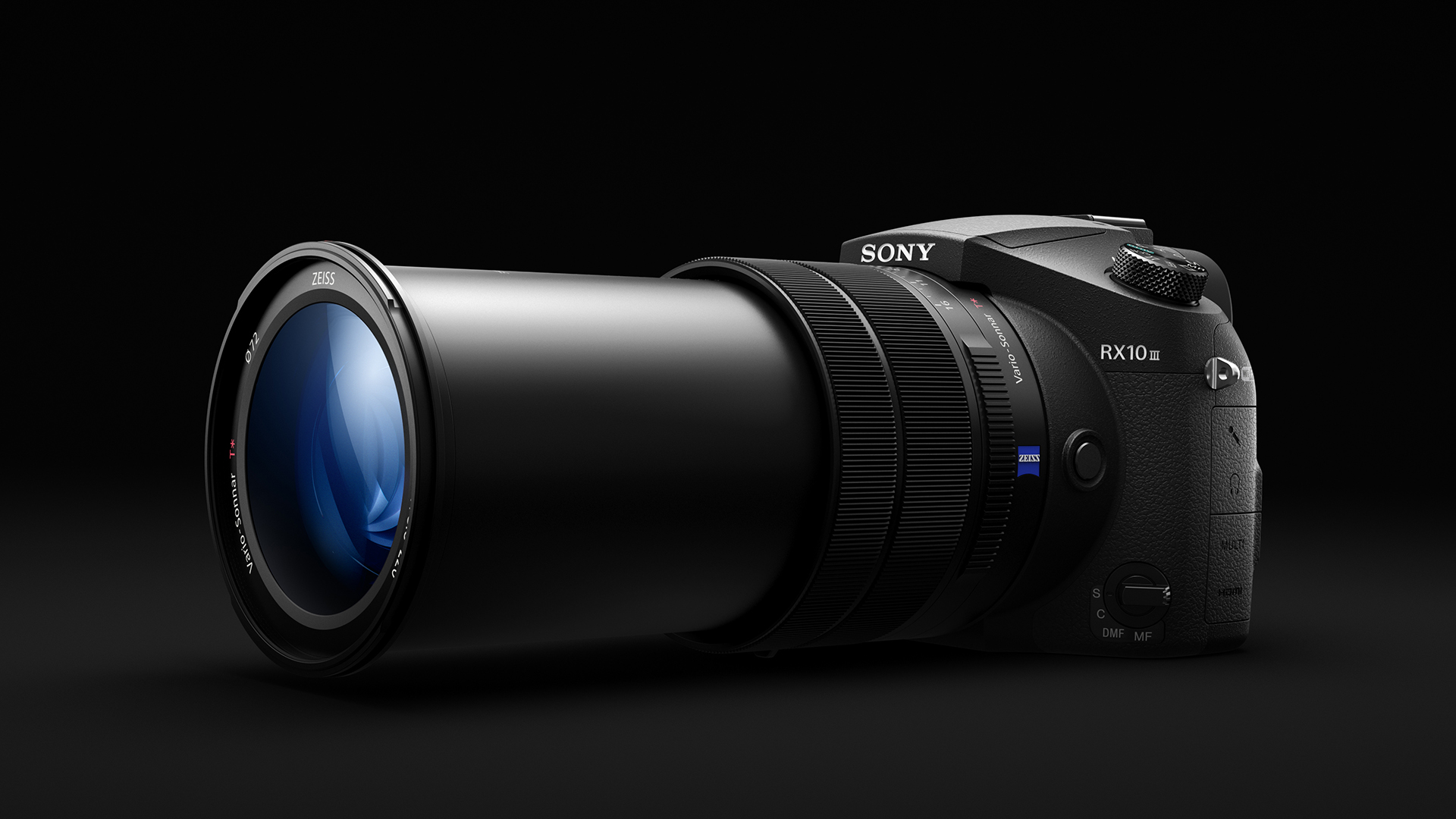
Sony Cyber-shot RX10 III
Like the Panasonic FZ2500 / FZ2000, Sony’s current flagship superzoom camera also boasts a 20MP 1.0-inch sensor and 4K video recording, although its Zeiss lens covers a 35mm-equivalent range of 24-600mm, with a wider maximum aperture range of f/2.4-4. It also offers a broader range of high-speed video recording options and a slightly longer battery life, together with a weather-resistant body and a faster top shutter speed. Videographers, however, may be put off by the fact that it doesn't offer a built-in ND filter, and it’s also limited to 8-bit output through its HDMI port.
Read our full review: Sony Cyber-shot RX10 III
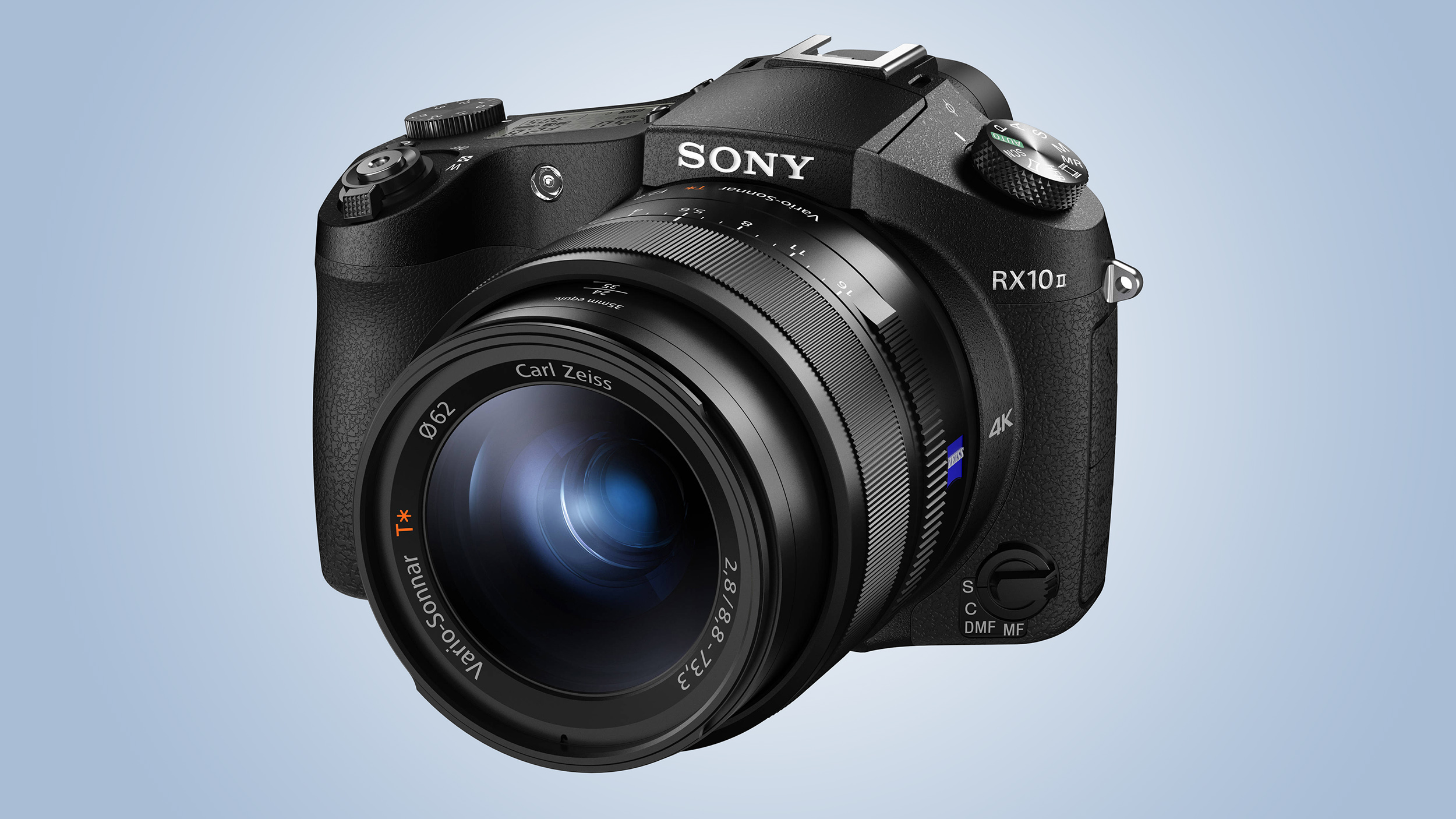
Sony Cyber-shot RX10 II
While the Sony RX10 II has been superseded by the above model, it’s still available for roughly the same price as the Panasonic FZ2500 / FZ2000. It doesn't quite offer as broad a focal range as the Panasonic, with a lens equivalent to 24-200mm, although it does at least have the advantage of a constant maximum aperture of f/2.8. Aside from price, there are further reasons to consider the RX10 II over the RX100 III. Its optic, for example, makes the camera considerably lighter, while the ND filter that the RX10 III lacks is included here. If you don’t need the reach of the FZ2500 / FZ2000’s zoom lens, the RX10 II is definitely worth a look.
Read our full review: Sony Cyber-shot RX10 II
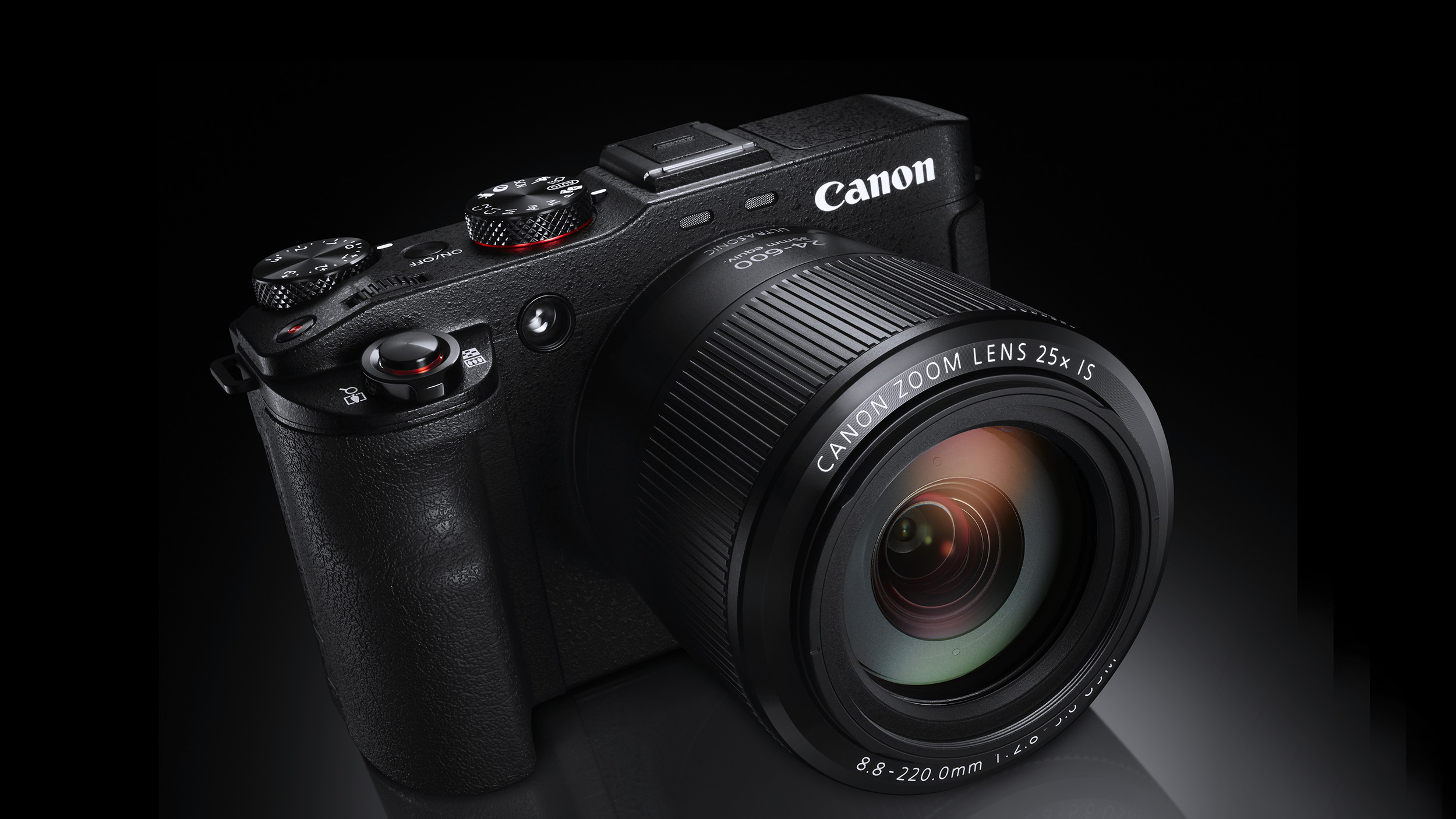
Canon PowerShot G3 X
Although the ageing PowerShot G3 X lacks a few niceties of the other models here, it comes with a far more agreeable price tag. It doesn't stretch to offering 4K video recording, nor does it offer a built-in electronic viewfinder (an optional one is available). Considering how much cheaper it is, it’s still very welcome to find a 20MP 1.0-inch sensor and the decent reach of its 24-600mm f/2.8-5.6 lens, and Canon has thrown in Wi-Fi and NFC too.
Read our full review: Canon PowerShot G3 X